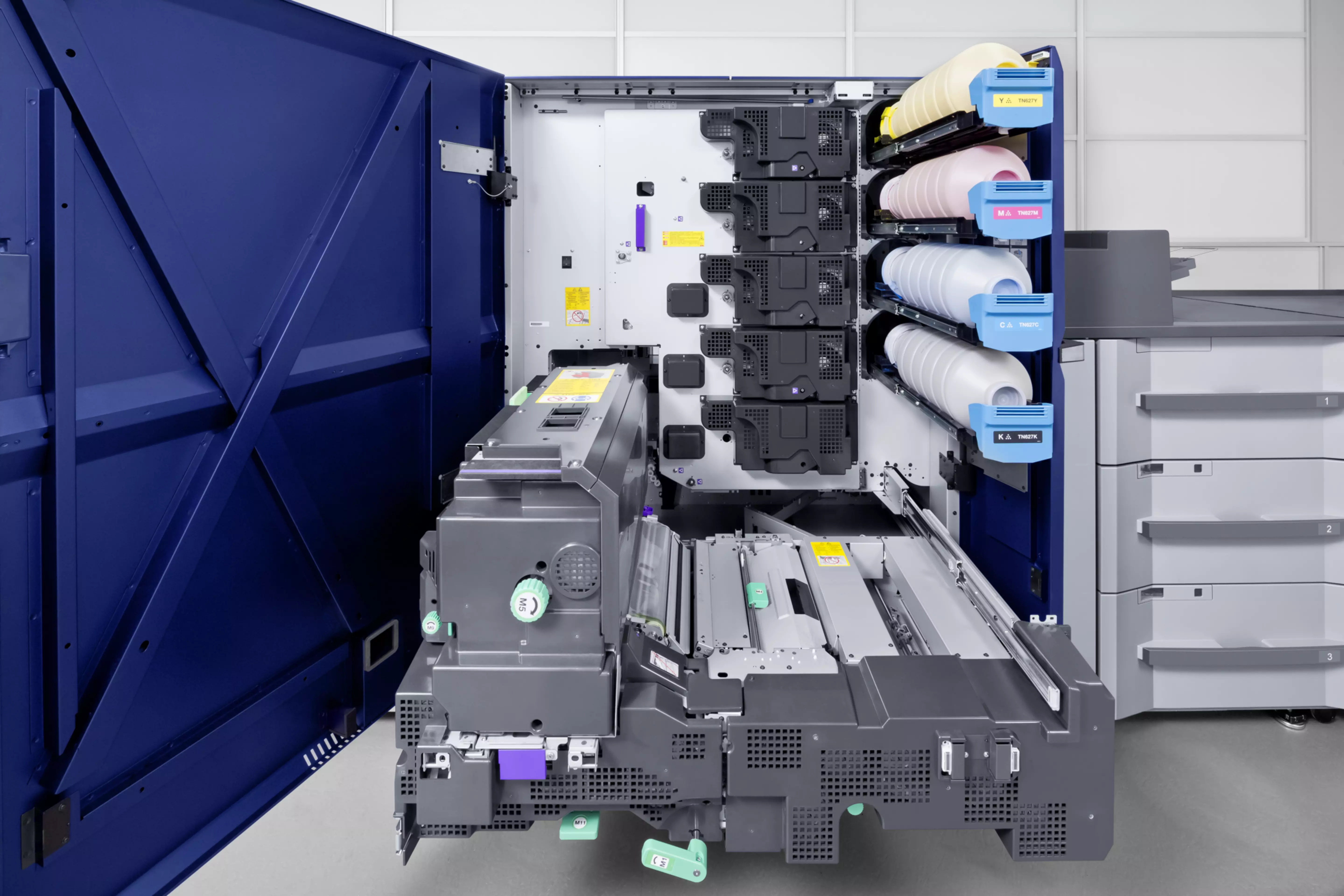Market for digital printing on the upswing
According to its report, The Future of Digital Printing to 2032, market researchers from Smithers give the digital printing industry a good report card for the next ten years and attest to its healthy condition. In 2022, its global volume was estimated at around 136.7 billion US dollars. Even taking into account the war in Ukraine, the associated inflation and the increased prices for paper and energy, this figure is expected to rise to 230.5 billion by 2032, which corresponds to almost a quarter of the entire printing business in terms of value.
Personalised print runs protect the environment
Digital printing now scores highly for small and medium print runs as a more eco-friendly printing process compared to offset. The printing plate exposure and associated chemical consumption common in the offset printing process are no longer necessary and set-up times are reduced to a minimum. The waste known from offset printing is almost completely eliminated and water is not consumed during the printing process.

Personalisation is fundamental to the sustainability of digitally printed advertising material. In contrast to mass-produced printed matter, which is distributed using the scattergun principle and therefore only achieves response rates in the lower single-digit range, individualised products avoid unnecessary wastage and print runs. This saves costs and reduces the impact on the environment. The modern motto is: quality instead of quantity! Because with personalised digital print products, double-digit response rates can be achieved despite smaller print runs.
Ecological is a selling point
Print customers have a growing eco-friendly awareness. They are increasingly asking for printed matter made from recycled paper before placing an order. In 2022, the
Europe-wide recycling rate was already 71 per cent - and rising.
Recycled papers and organic substrates

The paper industry is continuously expanding its range of environmental papers, especially for the digital printing segment. In general, more and more common offset papers can be printed directly and digitally without the usual pre-treatment. There are already signs in many areas that inkjet print products are also well on the way to achieving qualified eco-certification. In addition, many natural materials such as hemp, cotton fibres, bamboo and even coffee residues are being incorporated in high proportions into ecological speciality papers. The demand for organic substrates is growing, particularly in the label printing sector - however, depending on the origin of the materials, it should be checked whether they are actually sustainable substrates.
Inks, toners & more
The composition of inks is also evolving towards eco-friendly inks and sustainability. Solvent-based inks are being replaced by more degradable aqueous solutions, while dye-based inks are gradually disappearing and pigment-based formulas are dominating. An important aspect for the level of sustainability of a print product is deinkability, that is to say the removal of ink or toner from the paper. This is of great importance so that the corresponding papers can be easily returned to the recycling cycle. Various digital web printing systems have now been officially certified by the International Research Association for Deinking Technology (INGEDE) - following a test using the well-known INGEDE Method 11 and in accordance with the European Recovered Paper Council's "Deinkability Scorecard". The outputs of various digital printing systems achieved 90 to 100 out of 100 points and were certified or accredited by INGEDE.

Certified printing process
In addition to responsibly produced materials, many customers are looking for a print shop that can produce sustainably and offer high-quality product or company certifications. Ideally, they will recognise design errors in the pre-press stage and correct them in the direction of environmentally aware, resource-conserving, carbon footprint reducing, production. Printed matter that is produced by environmental print shops can be labelled with certificates: The responsibility documented on printed matter in this way is a real added value for customers. It strengthens the positioning of their brands and products and conveys trust and security to recipients of the printed products. The additional costs for such certified printed matter are between five and 12 per cent. Certifications such as the EU Ecolabel as well as national certificates and standards are available.